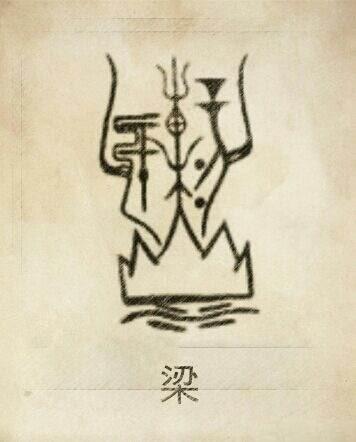The Liang(liáng) surname is one of China’s oldest and most storied family names. From ancient legends to modern achievements, the Liang family has played a pivotal role in shaping Chinese history and culture.

Ⅰ、Surname origins:
1. The Royal Roots
The Liang surname traces its lineage to Liang Kangbo (梁康伯), the youngest son of Qin Zhong, a nobleman who helped defeat the Xirong tribes. Liang Kangbo was granted the territory of Liangshan (modern-day Shaanxi Province), and his descendants adopted “Liang” as their surname after the Liang State fell in 641 BCE.
2. Geographical and Ethnic Roots
Land-Based Origins: Some Liang families trace their name to ancient lands like Jie Liang and Qu Liang in the Jin State.
3. Ethnic Integration:
Over centuries, groups like the Xianbei and Mongols adopted the Liang surname, enriching its diversity.
Ⅱ、Historical Figures:
1. Ancient model
Liang Hong (1st Century CE): A philosopher whose story of mutual respect with his wife, Meng Guang, became a symbol of marital harmony.
Liang Hongyu (12th Century): A legendary female general who led troops against the Jin Dynasty, embodying courage and leadership.
Liang Kai (13th Century): A master painter known for his minimalist ink-wash style, with works like The Immortal in Splashed Ink housed in Taipei’s National Palace Museum.
2. Modern Leaders
Liang Qichao (1873–1929): A reformist thinker whose essay “The Young China” inspired generations. His children, including architect Liang Sicheng and archaeologist Liang Siyong, became luminaries in their fields.
Liang Sicheng (1901–1972): The father of modern Chinese architecture, known for preserving ancient structures and designing the Monument to the People’s Heroes.
Liang Zhenying: The fourth Chief Executive of Hong Kong, instrumental in promoting regional integration.
Ⅲ、Cultural Significance:
1. Ancestral Homelands
Key regions like Anding (Gansu) served as cultural hubs for the Liang clans.
2. Family Philosophies
The “Straight Brush Hall" tradition, inspired by historian Liang Hu’s integrity, emphasizes:
“Truth is the foundation of history, and integrity is the cornerstone of character.”
Many Liang family mottos, such as:
“Better to be an honest official than a corrupt millionaire,”
reflect a commitment to ethics and education.
Ⅳ、Social impact:
1. Migration Patterns
Ancient: Spread along trade routes to regions like Fujian and Guangdong.
Modern: Over 11 million bearers worldwide, with significant populations in Guangxi and Guangdong provinces.
2. Contemporary Achievers
Liang Xi (1883–1958): A pioneer in forestry science who established China’s first forest chemistry laboratory.
Liang Shoupan (1916–2009): A founding figure in China’s missile and aerospace programs.
Liang Shiqiu's essays reshaped the aesthetics of modern Chinese language;
Liang Xiaosheng's works recorded the changes of the times.
Liang Wengen: The founder of Sany Group, a global leader in heavy machinery.
Conclusion
The evolution of the Liang surname is not only a testament to the transition of the Ying family from the mythological era to the modern but also a microcosm of the integration of Central Plains civilization and frontier culture. From Liang Hong's "holding the tray to the eyebrows" and Liangyu's resounding war drum to Liang Qichao's "Youthful China," these spiritual symbols across time and space collectively construct the cultural genes of theang surname, which are based on "loyalty and filial piety" and "daring to be the first." With the backbone of "Meijing" the wisdom of "Baoshan," the Liang surname has been writing unique chapters in the long river of history.